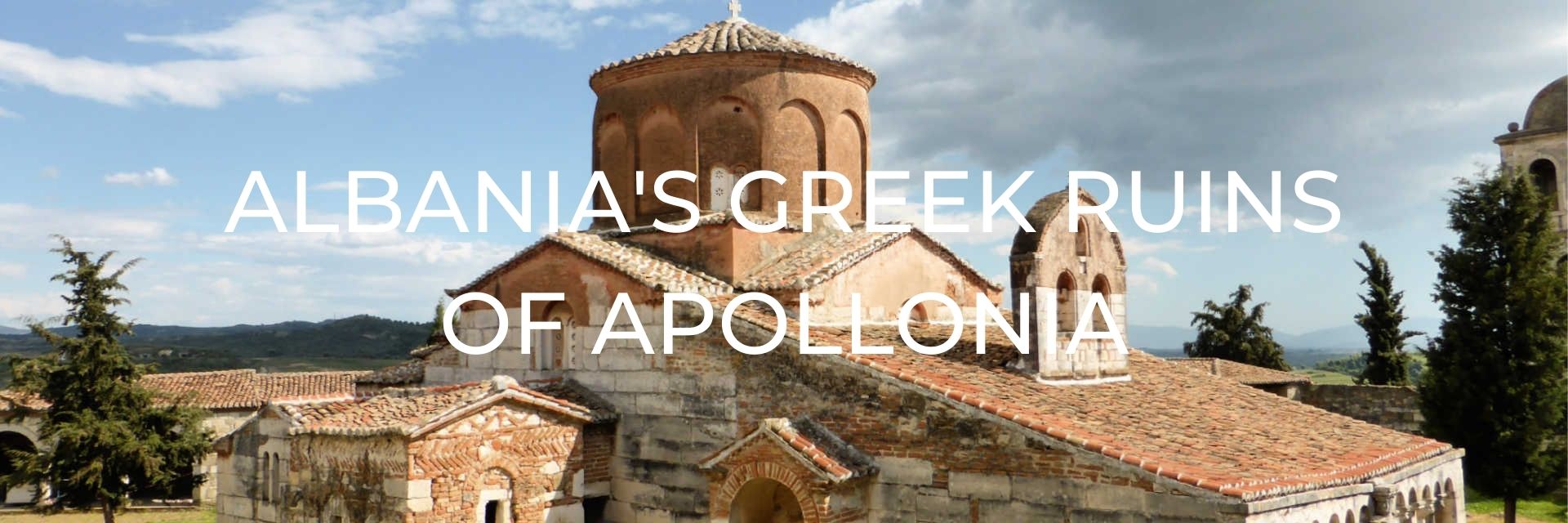
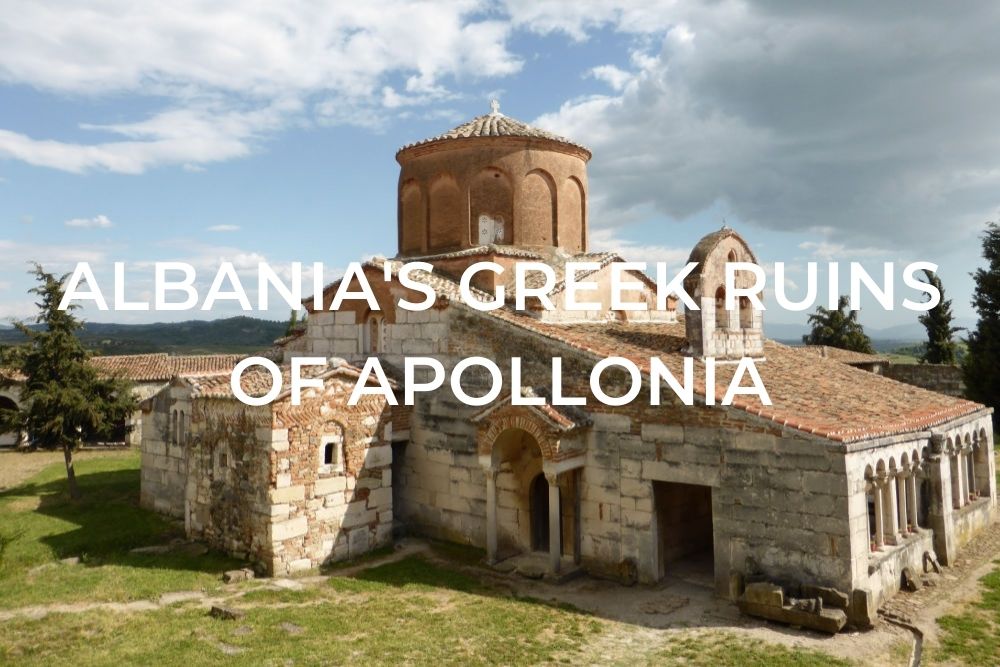
Founded in 588 BC, Apollonia was a significant trading port and cultural centre for about 50,000 people, many of whom settled here from nearby Corfu. In the 3rd century AD, however, an earthquake hit and forced the city into decline. Nowadays it is a huge site, though it is relatively untouched and unexcavated so there isn’t a lot of stuff to see. Worth a visit though? Yes, for a couple of hours.
We have an interest in that time period but are by no means scholars, so I’d say our hour and a half visit was just about right on for us. If you’re limited on time though when visiting Albania I’d say save more time for Butrint as there is much more to see and explore there.
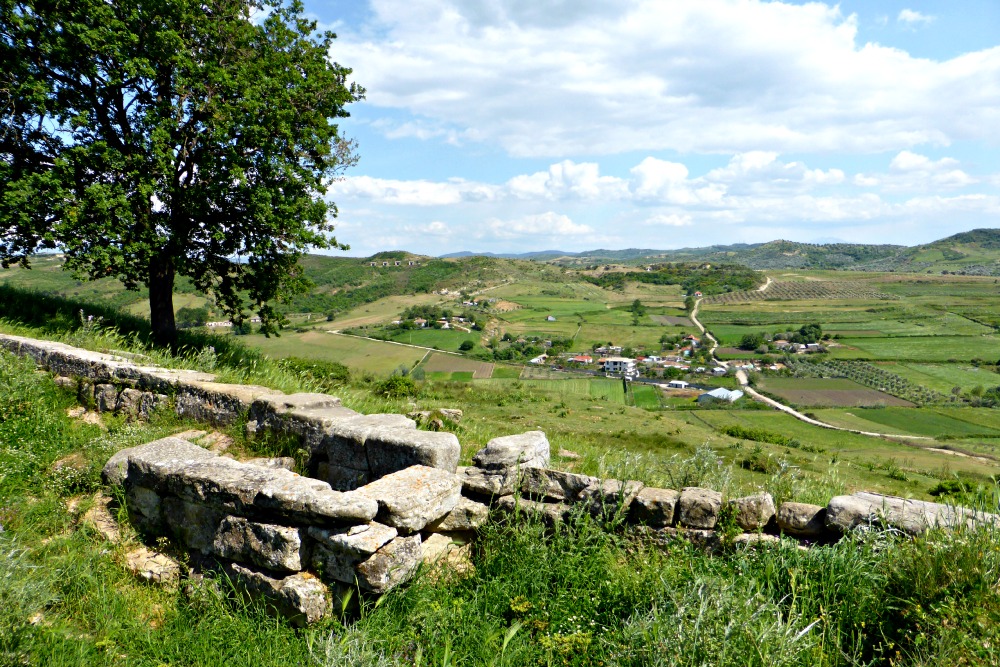
This post may contain affiliate links. Please read our full disclosure policy here.
One thing I thought was really interesting was how many people you have heard of from history that have passed through Apollonia. From Julius Caesar to Emperor Augustus who conducted his studies in the city academy, to the current Prime Minister of Albania who was there on the day we visited! I wonder if a visit from Julius Caesar brought about the same traffic jam of chariots as we experienced with cars and coaches due to the Prime Minister’s visit.
As I mentioned there isn’t much that has been excavated yet and a walk around the ruins only covers about 2 km. If the wooden hut in front of the church is open you’ll be able to buy a map of the site, but if not you can just wander around and you’ll come across everything there is to see. We were fortunate that our guide knew lots about the area so he showed us around telling us all about the history of the site and what each of the structures and areas used to be.
So what do you get to see on a visit to Apollonia? Well, let us show you around….
THE BOULEUTERION
An ancient Greek building along the lines of a forum or citizens government, the Bouleuterion is partially original and partially rebuilt. Although the rebuilt areas were done with the original materials from the 2nd century BC when possible, it is still the cause of much controversy because of their use of concrete in the restoration.
It was here that the people were congregating to see the Prime Minister the day we visited so, unfortunately, we weren’t able to get any photos without crowds of people in them.
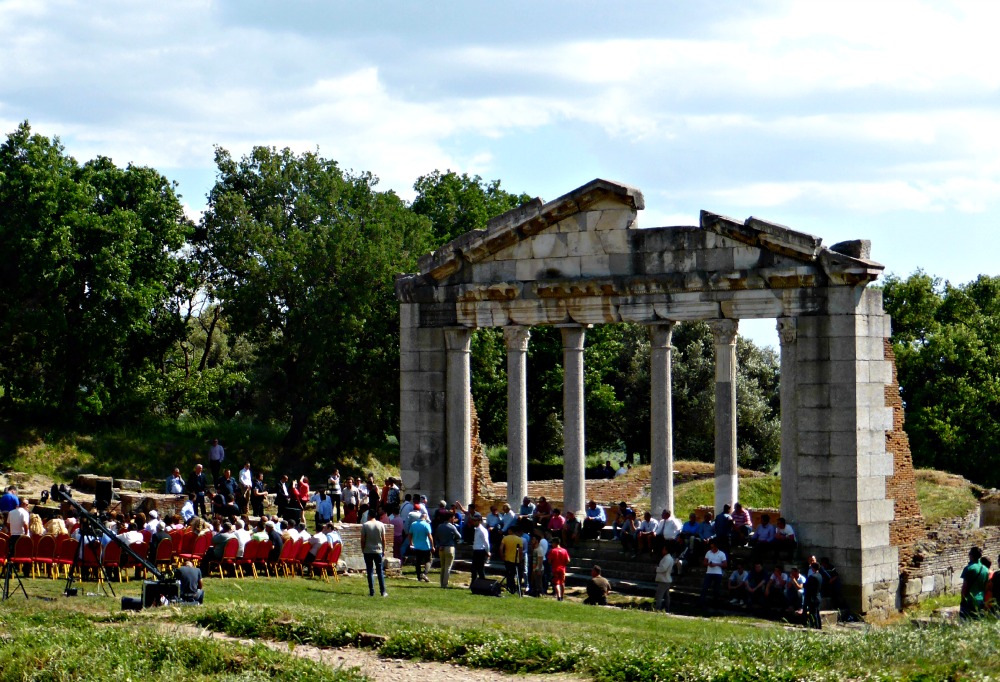
THE MAIN THEATRE
Built to accommodate about 7000 people the theatre is generally in poor condition and in need of renovation like much of the site.
I’ve heard there is a good view of the sea in the distance from this location but there were just too many people, and they were setting up chairs for the Prime Minister’s visit, for us to really linger and explore it.
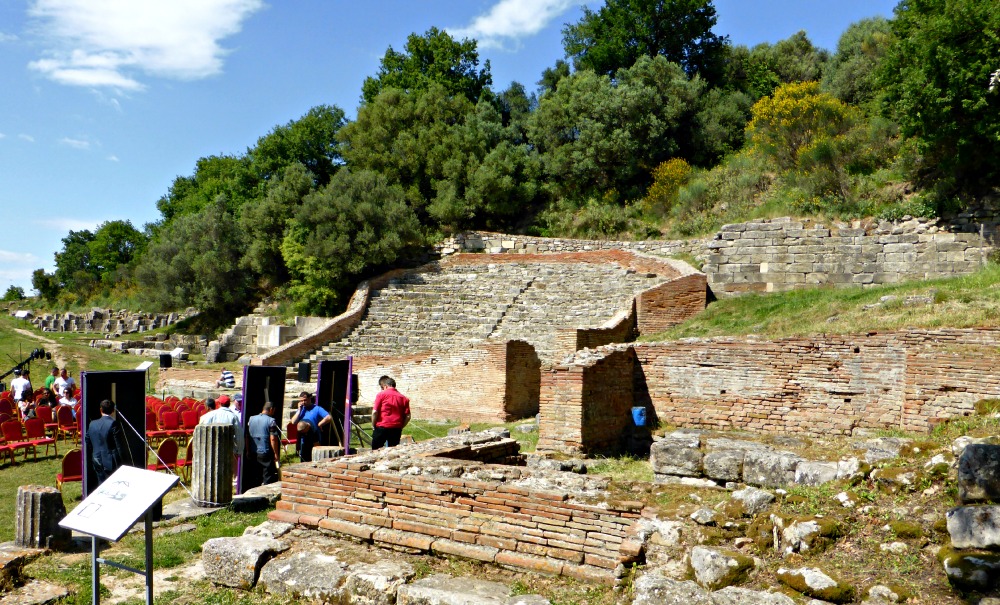
Instead, we continued our walk along the side to a boulevard of sorts that was lined with stones. This was an area that was lined with shops and people could have walked through the main walkway in front of them.
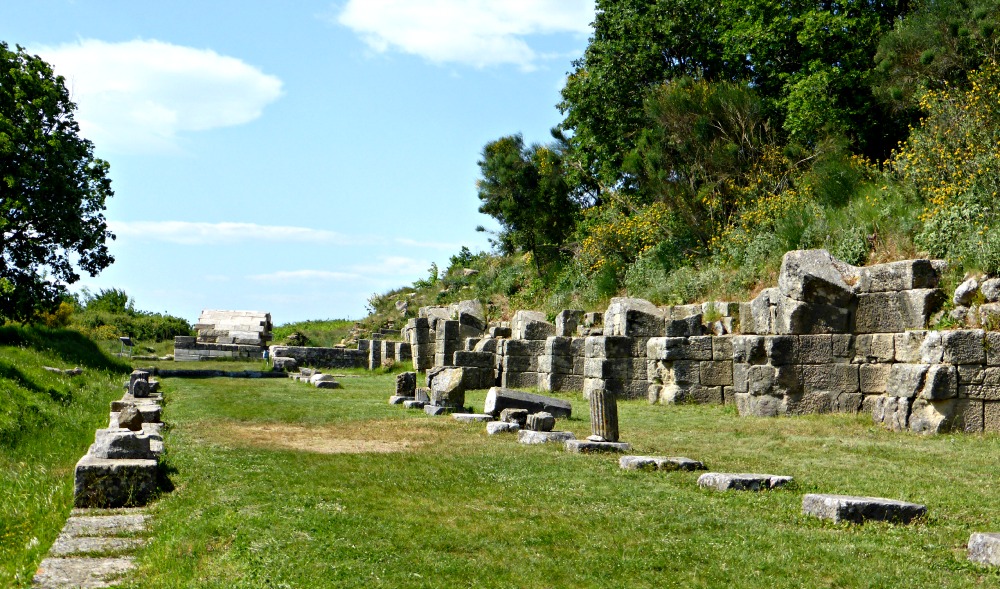
MONASTERY AND CHURCH OF SHËN MËRI (SAINT MARY)
This was definitely my favourite part of the whole visit, but it isn’t original to the site. It was built with materials found on the site and has been modified many times over the centuries since the 13th century when it was created to be a monastery.
If you visit, do pay close attention to the details on the outside and then go inside and I think you’ll enjoy the beauty in its simplicity.
Also, right next to the church is a museum that, although quite small, is really well done and contains many artefacts from around the site.
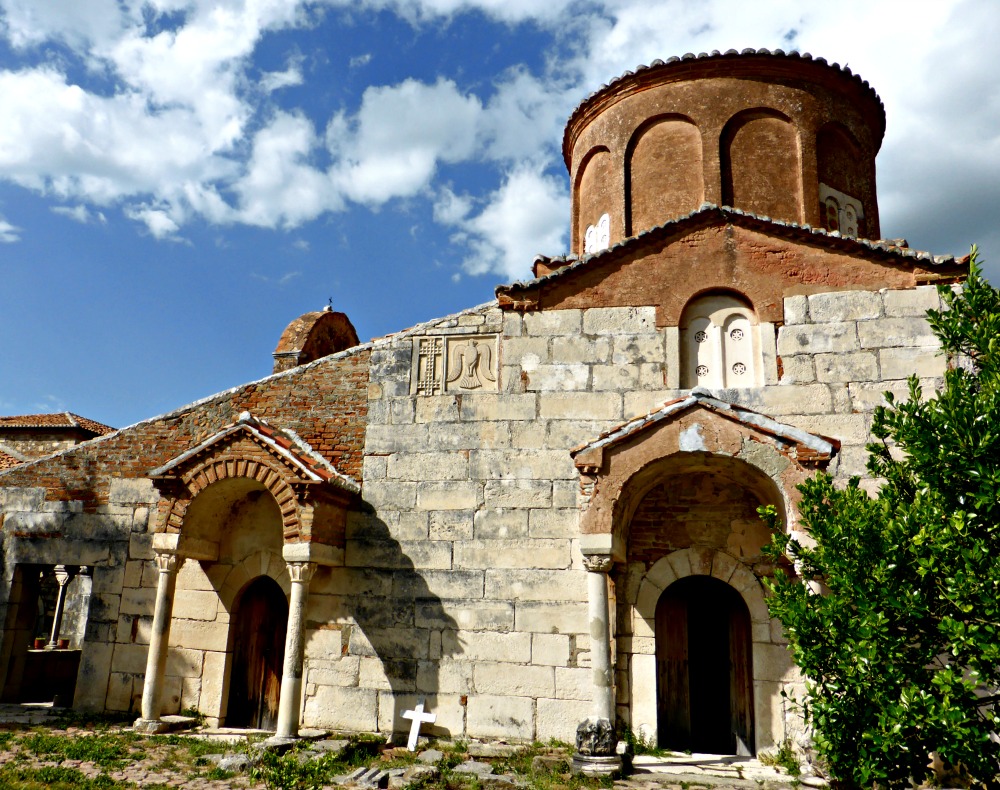
RESOURCES | PLAN YOUR TRIP TO ALBANIA
Some of the links in the post above are affiliate links. This means if you click on the link and purchase the item, we will receive an affiliate commission but this does not affect the price to you. Please read our full disclosure policy here.
